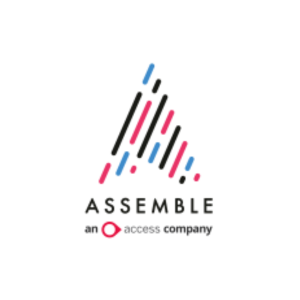Insights
INSIGHTS
All Topics
My Account
How to create apps using rapid prototyping
25 May 2022by Denise Atkins
We take a look at how rapid prototyping can be used to quickly design app-based services for your charity
A few years ago, every charity wanted an app, whether their users wanted one or not.
Although that buzz has died down, there are still good reasons for charities to develop an app, depending on the purpose it will serve.
Types of app
First, let’s define what we mean by an app.
A mobile app is a separate piece of software downloaded to your smart phone or tablet, usually from Apple’s App Store or Google Play. They can be hybrid apps, which run on any mobile phone, or native apps, built specifically for iOS or Android (so you may need both).
Alternatively, a web app uses your mobile device’s installed web browser – such as Chrome or Firefox. Think of them as particularly mobile-friendly websites, with a user interface designed to work well on a small screen. You might use a home screen icon to access it, but nothing else is installed on your device.
Both allow the user to perform certain tasks from their smartphone or tablet. But the technology and skills involved in building them are quite different.
There are pros and cons for each, but crucially you don’t need to decide up front. Let the design process inform this decision.
The purpose of your app
For an app to earn its place on someone’s phone, it must address a need. Think of it in terms of Push and Pull content.
Push content is your brand shouting its message. It might be a TV ad, poster, or promoted Facebook post. However well targeted, the audience isn’t making an active decision to access information about the charity. It will reach some people at the right time. Others will ignore it.
That’s not the kind of content that normally gets people to download an app. The ones we use regularly help us to achieve something. I might use CinemApp to find film showtimes, Trainline to plan my journey, and Santander to pay my friend for the ticket. These are all types of Pull content, accessed at a time to suit me.
If you just want a ‘vanity app’ as another route for your push marketing content, it’s unlikely to get you far. Some loyal supporters might download it. With push notifications they might even engage a few times.
But without the incentive of a service they need – or crave, like a gaming or social media hit – it will sit dormant on phones until they delete it.
Test your assumptions
Once you think you have an idea worthy of an app, you can design your first draft or ‘Alpha’ product. And the great news is that might be easier than you’d think.
There are lots of user-friendly tools available that can allow anyone – without coding skills – to create a rapid prototype.
This approach means that you invest a little bit of time and money developing a quick, tangible demo version of your product. You needn’t start your project with a tonne of user research. You can simply test your own assumptions.
Choose your prototyping tool
Assume you’ll throw away your prototype at the end of this process. This isn’t a waste, it’s a means to get something done quickly. You won’t need to spend hours evaluating software or worrying about scary questions like resilience, security, accessibility, or system integration. You’re simply building a proof of concept, and aiming to fail fast.
Make sure you have a rough idea of the features you want to build into your app. Then take a look at the various drag-and-drop tools available to build your prototype, such as Typeform, Wappler, Thunkable, or Bubble.
A quick Google will bring up many more, and most offer a free trial or a small monthly subscription. Don’t agonise over this decision, just pick one that looks like it will do the job, and get on and build something.
Get user feedback
Your alpha product hasn’t got to be beautiful or perfect, it just needs to guide your users through a series of steps to perform their task.
Put your alpha prototype into the hands of a few real users – be they your beneficiaries, volunteers, or donors, for instance – to test and provide feedback.
Watch people as they interact with the prototype if you can. Look out for places where they take a wrong turn or misunderstand on-screen instructions. Ask them what they think your copy means, and why they clicked what they clicked.
Most importantly, find out if they think the tool would be useful to them. Will it help them to achieve their goal? Or is their goal something completely different? Check out Adobe’s ultimate guide to user testing.
Now what?
User testing will help you to get into the heads of your users. Those assumptions you made at the start will either be validated or debunked. And that will inform what you do next.
Every design process will be different and, whatever the result, you will have learned something. You’ve arrived at some answers quickly and you’re ready to try again, without too much time spent or money invested.
You might throw away your first prototype and begin again from scratch. Perhaps you discovered your choice of prototyping tool didn’t do everything you needed it to. Or that the central idea for the product was flawed.
Alternatively, if the central idea seems to be working, you’ll make some changes and test again.
Onto the next version
It’s time to tweak and test and learn, and tweak and test and learn… until you have something that works. Then you can think about finally building the real thing.
Armed with your working prototype and user feedback, it will be easier to gain stakeholder buy-in. You’ll already have evidence that there’s a need and an audience for your product. And you’ll have insights to inform your choice of technology.
You can get into the specifics like realistic budget estimates and choosing consultants. Ultimately, all of that groundwork should make it easier to get the green light.
Rapid prototyping can help you understand your users’ needs and behaviours better, and help you build a case for the budget you need. Or it can tell you you’re barking up the wrong tree.
Either way, it’s a win.
More on this topic
Recommended Products
Our Events
Charity Digital Academy
Our courses aim, in just three hours, to enhance soft skills and hard skills, boost your knowledge of finance and artificial intelligence, and supercharge your digital capabilities. Check out some of the incredible options by clicking here.















